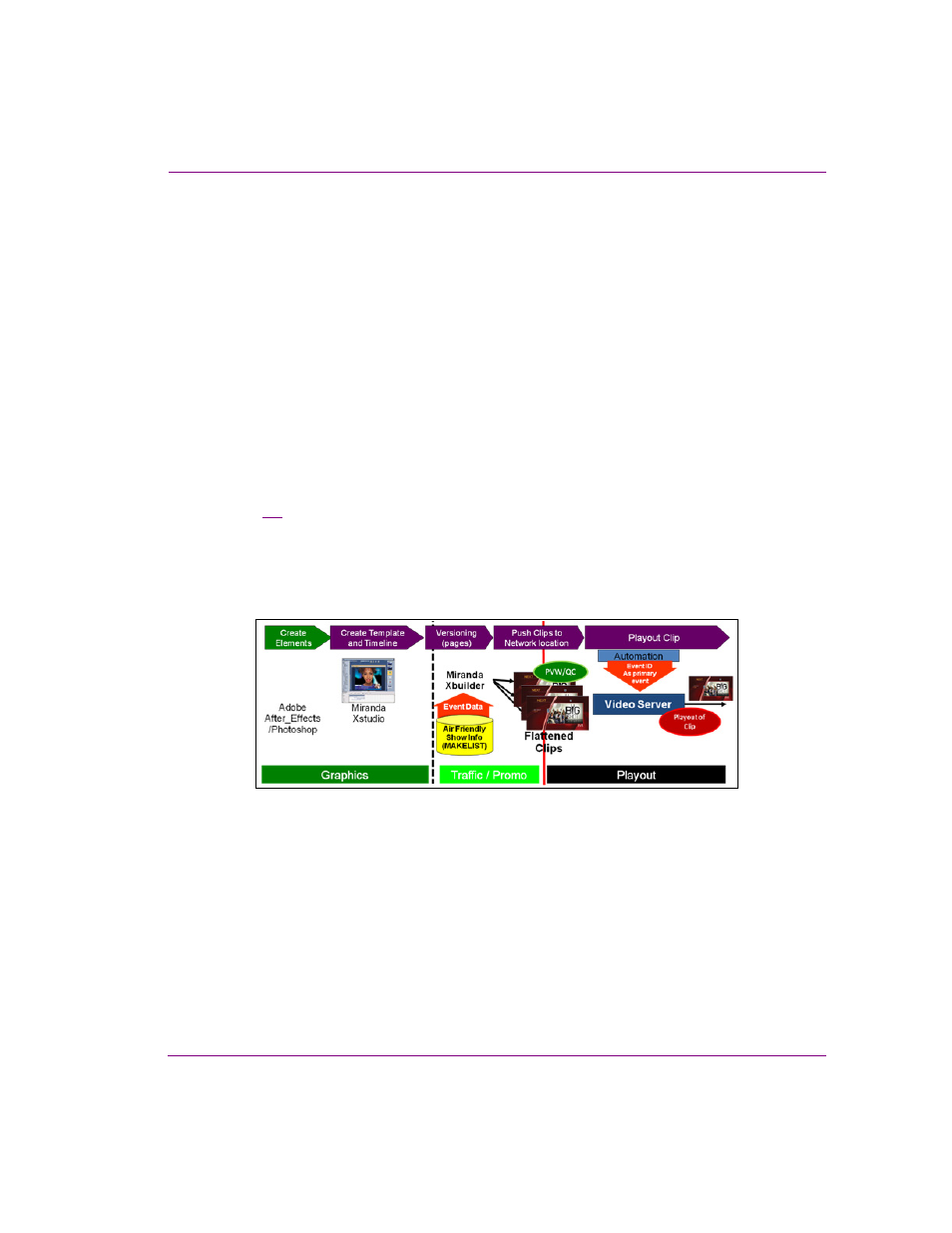Render to mxf for playout on a video server, Render to mxf for playout on a video server -3 – Grass Valley Xbuilder Vertigo Suite v.4.8 User Manual
Page 41

Xbuilder User Manual
4-3
Rendering pages and scenes to a clip file
Render to MXF for playout on a video server
Xbuilder’s Render to File feature uses the Vertigo Software CG’s rendering engine to render
pages and scenes into XDCAM and IMX compatible MXF files that are natively supported
on virtually all modern playout servers.
When you configure the Render to File feature, you select the output format from among
the following render format profiles:
•
MXF IMX 25 (PCM audio)
•
MXF IMX 30 (PCM audio)
•
MXF IMX 40 (PCM audio)
•
MXF IMX 50 (PCM audio)
•
MXF MPEG2 (PCM audio) HD
•
MXF MPEG2 (PCM audio) SD
•
MXF XDCAM HD-50 (50 Mbit 4:2:2) (PCM)
Figure
demonstrates the Render to file (MXF) workflow in which master templates are first
created in Xstudio. Once the templates are opened in Xbuilder, pages are created by
populating the templates with instance data (either individually or as a batch using a Merge
List). When Render to File is executed, the new pages are rendered and saved to disk (not
the Xmedia Server) as MXF clip files. The MXF files are now ready for eventual playout on a
3rd party video server.
Figure 4-2. Render to file (MXF) workflow
NOTES
•
Supplied profiles are heavily tuned and are not intended to be modified by the end-user.
•
Render to playout server compatible formats requires the XGE
NCODE
F
OR
P
LAYOUT
software license. However, MPEG2 encoding only requires the XG E
NCODE
license.
•
Encoding scales to the number of CPU cores on the system running Xbuilder.
•
MXF files generated by Xbuilder are not intended to be re-ingested into the Xmedia Server.
•
MXF Op1a has been deprecated on Windows 7.
